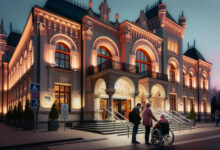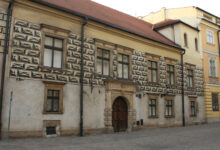How to Visit the Wooden Churches of Southern Małopolska
Discovering Poland's Treasures: A Guide to the Wooden Churches of Southern Małopolska
Nestled in the serene landscapes of Southern Małopolska in Poland, the Wooden Churches of the region are a unique sight to behold and a testament to medieval architecture. Recognised as a UNESCO World Heritage Site, these monumental churches are constructed using the traditional horizontal log technique, a method that has ensured their survival through the centuries.
As you plan your visit, you’ll be embarking on a journey that not only showcases ancient craftsmanship but also offers a glimpse into the rich cultural heritage of this part of Central Europe.
The journey to Southern Małopolska promises more than just architectural marvels; it’s an opportunity to immerse yourself in the historical narrative that these churches encapsulate.
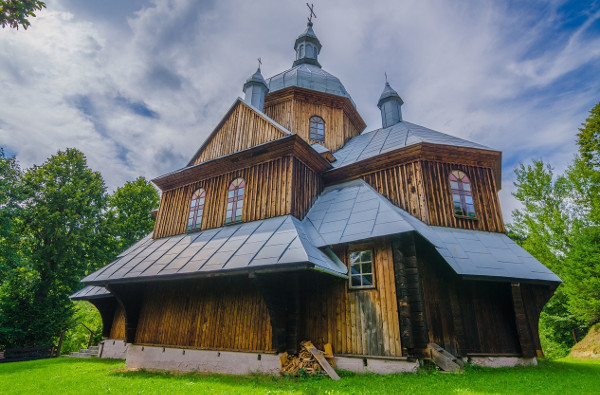
Each wooden church in the towns such as Binarowa, Dębno, Blizne, Haczów, Lipnica Murowana, and Sękowa carries its own stories, with some dating back to the 15th century. These structures are famed for their intricate wooden construction and the way they have retained their original form, allowing you to step back in time and experience the same sacred spaces that parishioners have treasured for generations.
As you traverse the scenic routes that lead to these churches, you can appreciate not just the artistry of the wooden edifices but also the peaceful rural settings that surround them.
When visiting, respect for the quietude and sanctity of the sites is paramount, as they remain active places of worship and pillars of their communities.
Your exploration of the Wooden Churches of Southern Małopolska will not just be about seeing a historical monument, but about experiencing a living, breathing tradition that has been meticulously preserved for present and future admirers.
Table of Contents:
Historical Context of Wooden Churches of Southern Małopolska
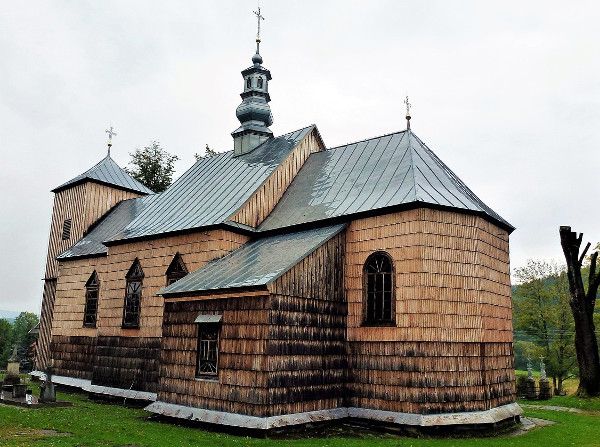
The Wooden Churches of Southern Małopolska are a reflection of the region’s rich cultural tapestry, born from a confluence of religious and architectural traditions unique to Northern and Eastern Europe.
Medieval Origins
The Wooden Churches of Southern Małopolska have their roots in the Medieval era, specifically dating back to the Middle Ages. These structures were primarily built from the 15th to the 17th centuries, employing the horizontal log technique, which was prevalent in Northern and Eastern Europe.
Your understanding of their historical context is incomplete without recognising that they served not just as places of worship but also as community centres where various Religious Ceremonies took place.
Cultural Significance
In the Małopolska Region, these churches are more than just religious symbols; they are beacons of the Cultural heritage of the area. The architecture of the churches blends Gothic styles with traditional wooden building methods.
While the Roman Catholic Church played a central role in their establishment, the region’s Orthodox Presence has also left its mark, contributing to the diverse cultural landscape of Eastern Europe.
This architectural fusion is testament to the churches’ central role in the day-to-day lives and spiritual experiences of their communities.

UNESCO Recognition
In recognition of their historical and cultural importance, six of the Wooden Churches in the towns and villages of Blizne, Binarowa, Dębno Podhalańskie, Haczów, Lipnica Murowana, and Sękowa were inscribed as UNESCO World Heritage Sites.
These churches represent the very essence of the Heritage of Southern Małopolska and are celebrated as outstanding examples of the timber church architecture that is specific to the region and of significant importance to the wider context of World Heritage Sites.
Architectural Features
The Wooden Churches of Southern Małopolska are a testament to the sophisticated craftsmanship and architectural ingenuity of the region. You’ll discover the unique construction techniques, the intricate iconographic details, and the varied design styles that define these historical structures.
Construction Techniques
The Wooden Architecture Route in Małopolska showcases the traditional horizontal log technique, wherein logs are placed horizontally and interlocked at corners by notching. This ensures stability and aesthetics without the use of nails.
The use of high-quality structural joinery, particularly in the roof trusses, is evident in how the log structures of the nave and chancel are bound together. This not only reinforces the wooden churches but also creates their distinctive tall shingled roofs that cover both the nave and chancel.
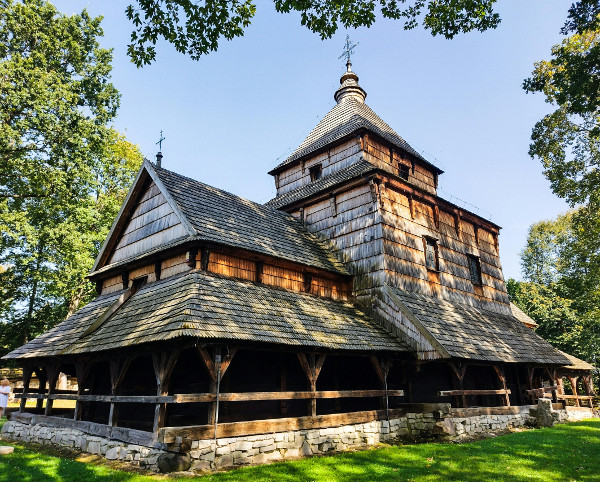
Iconographic Details
Upon entering these churches, your attention will be captivated by the rich iconography. Many of these buildings are adorned with intricately detailed wall paintings that narrate religious stories and reflect the artistic quality of the time.
The walls serve as a canvas showcasing a mix of religious and folk motifs that bring to life the cultural heritage of the region.
Design Styles
Each church embodies unique design styles that reflect a blend of influences. Gothic elements are prevalent, as seen in pointed arches and ribbed vaults, typical of Gothic churches.
Over time, influence from the Renaissance and Baroque periods brought about transformations with the introduction of intricate ornaments and painted details. The wooden churches also feature towering structures often capped with elegant shingles, reflecting the diverse timber architecture heritage that ranges from simple to complex designs.
Recommended tours and trips from Krakow:
- Day Trip to Auschwitz from Krakow
- From Krakow: Half-Day Salt Mine & Schindler’s Factory Tour
- From Krakow: Slovakia Treetop Walk, Zakopane & Thermal Spa
- From Krakow: Zakopane & Tatra Mountains Tour
- Is it Better to Visit Krakow or Prague?
- Taxi from Krakow to Auschwitz
- The Ultimate Guide to Getting from Krakow to Paris
- Winter Day Trips from Krakow
The Churches
Embarking on a journey to the Wooden Churches of Southern Małopolska, you’ll encounter some of the finest specimens of timber architecture, deeply rooted in the Roman Catholic and Orthodox traditions.
These structures, recognised by UNESCO, showcase the intricate Gothic ornamentation and historical significance of the region.
Binarowa
St. Michael Archangel’s Church in Binarowa, dating back to around 1500, stands as one of the oldest wooden churches in the area. Its Gothic style and well-preserved condition are emblematic of the traditional timber architecture of Southern Małopolska.
Blizne
Blizne is home to another stunning example of ecclesiastical architecture: All Saints Church. A jewel of the region, this church serves as an important testament to the persevering Roman Catholic culture in the area since the mid-15th century.
Dębno
In Dębno, St. Michael Archangel’s Church distinguishes itself, not just for its timber architecture but also its inclusion on the UNESCO World Heritage List. Erected in 1335, its wondrous fir-wood construction reflects the fusion of local tradition with influences of the Roman Catholic Church.
Haczów
Assumption of Holy Mary Church in Haczów prides itself on being one of the most expansive wooden Gothic churches, with origins tracing back to the 14th century. It also carries the honour of being listed on the UNESCO World Heritage List, reinforcing its monumental status.
Lipnica Murowana
The village of Lipnica Murowana showcases St. Leonard’s Church, an exemplary end-of-the-15th-century timber structure. Its open arcades and rich history make it an important pilgrimage site and an outstanding representative of Southern Małopolska’s wooden architectural wonder.
Sękowa
Lastly, St. Philip and St. James Church in Sękowa, constructed in 1520, bears the signature characteristics of the region’s wooden architecture. The church’s elegant form and religious significance contribute to the rich cultural tapestry woven by these historical sanctuaries.
Route and Exploration
Embarking on a tour of the Wooden Churches of Southern Małopolska offers a unique glimpse into historical architecture and religious heritage. The region presents a rich tapestry of cultural landmarks set against the scenic backdrop of Lesser Poland.
Planning Your Visit
When planning your trip to the wooden churches, it’s essential to consider the travel logistics involved. Lesser Poland Voivodeship, locally known as Małopolska, is relatively accessible from Krakow, the region’s main city.
Before setting out, pinpoint the locations on Google Maps to optimise your travel schedule and ensure you visit as many sites as possible. It forges a clear path through the Carpathians, especially the Beskid Niski area, and takes you along a picturesque journey, so allocating a few days for this activity is advisable.
Wooden Architecture Route
The Wooden Architecture Route is your primary guide to exploring over 250 historically significant wooden structures. Along this 1500 kilometre trail, you’ll encounter:
- 123 Roman-Catholic churches
- 39 Orthodox churches
- 9 skansens (open-air museums of rural architecture)
- 14 country manors
These sites are not only architecturally impressive but also culturally important, revealing the religious and social history of the region. To navigate, use a combination of personal vehicle travel and local transport for areas that are hard to reach by car.
Surrounding Attractions
While travelling the Wooden Architecture Route, you’ll have the opportunity to experience attractions beyond the wooden churches. The route brings you through dynamic landscapes including the serene Dunajec Gorge.
Allow time to visit local skansens, where you can see traditional Carpathian village life preserved. Immersive experiences like these complement your understanding of the region’s history and its architectural heritage.
Frequently Asked Questions
In this section, you will find pertinent information addressing your queries about the Wooden Churches of Southern Małopolska.
What are the visiting hours for the Wooden Churches in Southern Małopolska?
The churches are typically open to visitors during the day, but hours may vary for each location. It is advisable to verify specific visiting hours by checking the official websites or directly contacting individual churches.
Are there any guided tours available for the Wooden Churches of Małopolska, and how can I book one?
Guided tours are available for these historical sites. To book one, you should contact the local tourist information centres or arrange through travel agencies that specialise in cultural tours in the Małopolska region.
Can you provide information on the architectural styles represented by the Wooden Churches of Małopolska?
The Wooden Churches of Southern Małopolska exhibit Gothic architecture executed in wood, with features such as steep roofs, intricate woodworking, and the use of the horizontal log technique.
What is the significance of the Wooden Churches of Southern Małopolska being listed as a UNESCO World Heritage site?
Being listed as a UNESCO World Heritage site signifies the exceptional importance of these churches. They are recognised for their unique architectural style, historical value, and contribution to the cultural landscape of the region.
What is the best way to reach the Wooden Churches of Southern Małopolska from Kraków?
The most efficient way to reach the Wooden Churches is by car. However, public transport, such as buses, is also available. Access to particular sites may depend on their proximity to the main roads or towns.
Are there any entrance fees or ticket requirements for visiting the Wooden Churches of Southern Małopolska?
Some churches may charge a small entrance fee or accept donations to aid in their maintenance. Specific ticket requirements, if any, can be confirmed at the church or through the contact information provided online.

